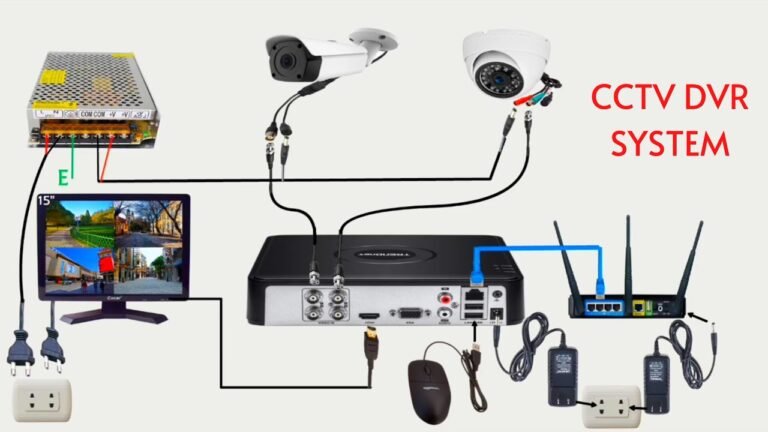How DVR Works With CCTV

A wireless router is a crucial device in modern networking, enabling wireless connectivity for various devices in homes and businesses. Acting as the central hub for internet access, a wireless router connects to a modem, which receives the internet signal from an Internet Service Provider (ISP). The router then transmits this signal wirelessly using radio waves, allowing multiple devices, such as smartphones, laptops, tablets, and smart home gadgets, to connect to the internet without the need for physical cables.
The primary function of a wireless router is to manage data traffic efficiently. It assigns IP addresses to each connected device, ensuring that data packets are routed correctly to and from the internet. This capability allows multiple devices to access the network simultaneously without interference. Modern wireless routers support dual-band or tri-band frequencies, typically 2.4 GHz and 5 GHz, which help manage network traffic and reduce congestion. The 2.4 GHz band offers broader coverage and better penetration through walls, making it ideal for larger spaces, while the 5 GHz band provides faster speeds but over shorter distances, suitable for high-bandwidth activities like streaming and gaming.
Wireless routers come with various features that enhance security, performance, and user convenience. Advanced encryption protocols, such as WPA3, protect the network from unauthorized access and cyber threats. Parental controls and guest network options allow users to manage and restrict access, ensuring a safer online environment. Additionally, Quality of Service (QoS) settings enable users to prioritize certain types of traffic, ensuring smoother performance for critical applications like video conferencing or online gaming.
The installation and configuration of wireless routers have become more user-friendly, often involving straightforward setup processes guided by companion apps or web interfaces. These tools assist users in configuring their network settings, such as SSID (network name), passwords, and security protocols, without needing extensive technical knowledge. Furthermore, many routers support firmware updates that enhance functionality and security over time.
In the era of smart homes and the Internet of Things (IoT), wireless routers have become even more integral. They act as the backbone for numerous connected devices, from smart thermostats and security cameras to voice assistants and appliances. As technology advances, routers continue to evolve, offering greater speeds, improved security, and more robust connectivity to meet the increasing demands of connected lifestyles.
In summary, wireless routers are essential devices that facilitate wireless internet connectivity and network management in homes and businesses. With features that enhance security, performance, and ease of use, they play a pivotal role in supporting the growing ecosystem of connected devices in our daily lives.


To connect your WiFi CCTV camera to your mobile, first, download the official app from the app store. Follow the app’s instructions to create an account. Power up your camera and make sure WiFi is enabled. Access your phone’s WiFi…